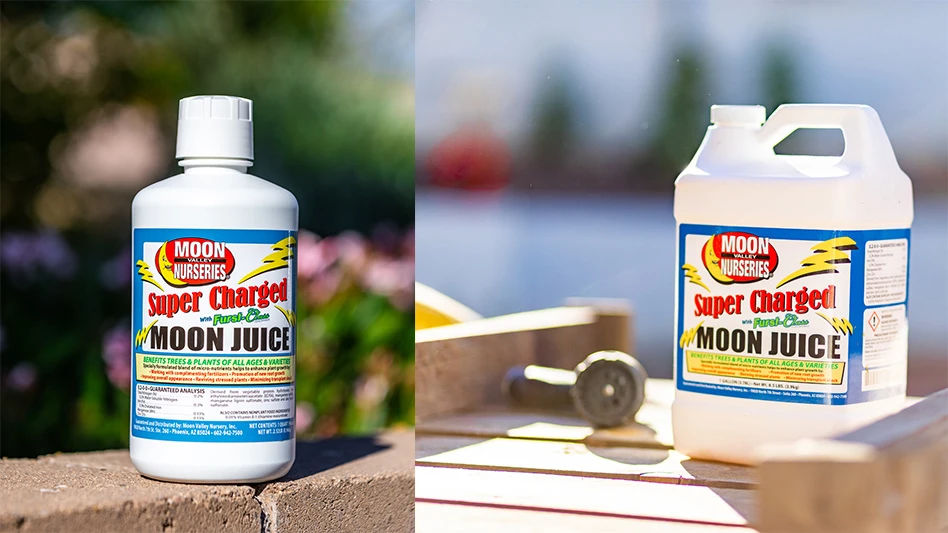Silicon is plentiful in most soils but is generally not considered to be an essential plant nutrient because most plants can complete their life cycle without it. However, many studies have shown beneficial effects when silicon is present and taken up by plants, including increased plant growth rate and yield, increased plant resistance to fungal pathogens and insect pests and improved drought resistance. Silica amendments have also been shown to correct soil toxicities resulting from high levels of soluble manganese, iron and aluminum and to increase the quantity of mobile phosphates in the soil.
{sidebar id=54}
In greenhouse culture, crops are often grown in soilless mixes that are devoid of silicon. Even rockwool, which is 47 percent silicates (SiO2), has little bio-available silicon. Therefore, silicon must be applied as a nutrient solution amendment or foliar spray to reap potential benefits.
Limited research on greenhouse crops
Although the effects of silicon have been extensively investigated in some crops such as rice, scientific studies documenting the beneficial effects of silica amendments on greenhouse crops are limited, and further work is needed.
In roses, paper daisies (Helichrysum bracteatum) and cucumbers, increased plant growth has been reported. This included increased stem length in hydroponic Kardinal roses and in Pinocchio miniature roses, increased stem diameter and weight (both fresh and dry) in Kardinal, and increased weight of roots, increased total yield and improved quality in Pinocchio. In paper daisies, silicon treatment increased shoot number, flower number and dry weight by 25, 62 and 66 percent, respectively.
Increased resistance to pathogens and pests has been reported in greenhouse cucumbers, tomatoes, roses, zinnias and chrysanthemums. Resistance has been reported for these fungal diseases: blackspot in roses, powdery mildew in cucumbers and zinnia and Pythium in tomatoes and cucumbers.
Leaf miner populations were reduced in chrysanthemums when the concentration of silicon in plant leaves reached 0.4 percent. Silicon-induced resistance to pathogens and insect pests is of interest to greenhouse growers because this additional cultural tool in an integrated pest management arsenal could result in reduced pesticide use.
Which crops are responsive?
The accumulation of silicon at significant concentrations in plant tissues is confined to certain plants, primarily monocots. However, even plants that are considered by researchers to be “nonaccumulators,” with dry mass levels of silicon below 0.5 percent, may accumulate silicon in specific tissues. To make efficient use of silicon in cultivating floriculture crops, it is necessary to understand which species accumulate silicon during development.
In studies conducted by the USDA-ARS Greenhouse Production Research Group in
Test results showed that some plants, such as zinnia, cucumber and
In another study conducted at the
Data of this type can be used to predict which crops will be most responsive to silicon fertilization. For example, silicon was found to reduce symptoms of powdery mildew in zinnia but had no effect on species such as begonia and geranium that do not accumulate silicon. Determining the potential benefit from silicon could be a large benefit to greenhouse growers using soilless media and hydroponic culture.
Accumulator vs. nonaccumulator plants
However, there is significant evidence that silica fertilization may positively affect both silicon-accumulator plants and “nonaccumulator” plants. In addition, some effects of silicon, such as reduced incidence of micronutrient toxicity, appear to occur even if silicon is not taken up in appreciable amounts. Silicon can also affect macronutrient uptake in nonaccumulator plants. For example, silicon was shown to reduce poinsettia bract necrosis, a problem linked to calcium deficiency.
Gerbera is another crop that does not accumulate much silicon in leaf tissue, yet the addition of silicon to gerbera plants has resulted in higher quality flowers in terms of stem thickness and proportion of ‘class I’ graded flowers. Results from these studies must be interpreted carefully, however, because many of the benefits of silicon could possibly be attributed to other nutrient ions (counterions) contained in silicon fertilizers supplied to the plant.
How does silicon work?
Silicon is absorbed as silicic acid by plant roots and transported via the xylem to stems and leaves. The mode of action of silicon in plant tissues is not fully understood. Silica polymers impregnated along epidermal cell walls strengthen stems and present a barrier against water loss and fungal penetration. Silicon can also deposit in xylem vessel cell walls, preventing constriction of xylem under high transpiration stress, and in root cells, where it acts as a barrier against infection by parasites and pathogens.
Silicon deposits are commonly found at the base of leaf hairs and at sites where water exits from plants or where xylem ends. Some plants have been shown to deposit silicon on the leaf margins. Plant tissues high in silicon may be difficult for insects to chew and digest and for mouthparts to puncture.
Although silicon-induced morphological changes are not readily visible, silicon-treated plants can be stiffer or sharper to the touch. For example, silicon-treated
Greenhouse applications
Potassium silicate is a source of highly soluble potassium and silicon. It is used primarily as a silica amendment, but has the added benefit of supplying small amounts of potassium. There are several available products that can be used in commercial greenhouses (such as Pro-Tekt, Zacsil AG, AgSil and Barricade). They are also touted as protecting against piercing insects and invading fungi such as powdery mildew on some plants. These products are not registered as pesticides, but they may play a role in reducing attacks by insects and diseases.
Potassium silicate is highly alkaline, so refer to product manufacturers concerning pH adjustments needed and tank mix compatibility. When applying potassium silicate as a foliar spray directly to leaves, always spot-test plants first to avoid potential phytotoxicity. A slow-release source of silicon is also available for greenhouse use as a growing medium (Dyna-Rok II High Silica Grow Medium).
{sidebar id=1}
- Julie Newman
June 2008
Get curated news on YOUR industry.
Enter your email to receive our newsletters.Latest from Nursery Management
- Society of American Florists accepting entries for 2025 Marketer of the Year Contest
- Sustainabloom launches Wholesale Nickel Program to support floriculture sustainability
- American Horticultural Society welcomes five new board members
- Get to know Christopher Brown Jr. of Lancaster Farms
- American Floral Endowment establishes Demaree Family Floriculture Advancement Fund
- The Growth Industry Episode 3: Across the Pond with Neville Stein
- The Growth Industry Episode 2: Emily Showalter on how Willoway Nurseries transformed its business
- March 2025 issue recap






